In the mid 1970s Olympus had a nice range of compact cameras, going from the 1/2 frame Pen to the Sophisticated 35RD. Two of these cameras are the subject of this comparison review: the Olympus Trip 35 and the 35ED.


The Olympus Trip 35
This was a product from an earlier generation of cameras. When it was introduced in 1967, it’s selenium cell was almost an anachronism. The original Canonet 28, released about the same time also featuring a selenium cell, was nowhere near as long-lived, getting replaced in 1971 and being largely forgotten since. The Trip, however, carried on until 1984. Although the Olympus Logo had been updated in the late sixties, The Trip predated the new logo and sported the narrower font until the day it was (finally) withdrawn.

Exposure
The Trip 35 is quite a basic camera. Its shutter has only two speeds: 1/40 and 1/200, which it chooses based on the light it senses from the selenium cell surrounding the f/2.8 lens. It combines the chosen shutter speed with an aperture value from f/2.8 to f/22 to get the right exposure. Early models only catered for films from ASA/ISO 25-200, but this was extended fairly early on to ASA/ISO 400.
If the Trip thinks it is too dark to take a picture, it will block the shutter. This is a pet peeve of mine: if I decide to take a picture in dark conditions, I really don’t want the camera overriding me. However, before it stops an exposure a large red tab is raised up from the bottom of the viewfinder. It is relatively simple to just switch the camera to a manual F/2.8 aperture and complete the exposure at 1/40. Of all the implementations of a low-light shutter lock the Trip’s is about the best I’ve seen. I think the cut-off is also reasonably generous, as I’ve rarely been stopped from taking a shot and the warning comes early.
Flash
The Trip features a hot shoe on the top plate at a time when a lot of cameras only had a cold shoe. Despite this, flash exposure has to be worked out manually (or left to the flashgun), as there is no ‘Flashmatic’ support. Once you know what f-stop you want, you can set this with the ring around the lens nearest the body. As soon as you are off ‘A’ for auto, the camera uses the 1/40 shutter speed, so you always have a fallback of manually setting an f-stop that will work with 1/40 as a ‘creative’ fallback.
Optics
The lens is a 40mm D.Zuiko, meaning that it has 4 elements. It is a good sharp little lens and simple enough that it doesn’t exhibit any adverse traits. Despite the actor Bryan Pringle’s comments in the 1970s UK advert for the Trip saying ‘The Trouble with these small cameras is the lens..’, the lens in the Trip manages very well.
What you don’t get is a rangefinder. Zone focusing is the order of the day, but it is a thoroughly practical solution for a lens of this focal length in decent light. The focus ring features just four clear pictograms, with the ‘group’ one being in a slightly different colour, indicating that (in good light) the lens can generally be left on that setting.
Viewfinder
The viewfinder is a bit of a bonus; it is bright and uncluttered, with clear frame lines and parallax marks. When light is too low a red marker rises into the viewfinder, so the low-light cut-off is not as unexpected as in some cameras. The real treat is down in the bottom right-hand corner – the zone focus symbols are clearly visible via a little prism. It manages to be, at the same time, both easy to see, but not in the way.

Missing…?
This is a budget camera, so there are some things that are missing. As well as no rangefinder, it has no wind-on lever, relying instead on a thumb wheel. There is no self-timer and no flashmatic option and – most notably, there is no battery compartment.
The Olympus 35 ED
The ED was one of a series of cameras that Olympus produced using the Seiko ESP shutter. The same shutter was also used in a number of Yashica and MInolta cameras, including the Minolta HiMatic E).

The first Olympus camera with the Seiko shutter was the EC. Introduced in 1969 and possibly aimed at a similar market to the Trip, it featured zone focusing with indication in the viewfinder. The EC was followed by the ECR (much the same camera, but with a rangefinder) in 1972 and the EC2, which was very similar to the original EC. All of these cameras had film advance via a thumb wheel and featured a little ‘Atom’ badge (as did the Yashica and Minolta cameras that used that shutter).
In 1974, Olympus introduced their last ESP shutter camera, the ED.
Pecking order
The ED found itself in a trio of nice little rangefinder cameras. There were notable differences between them, due mainly to the fact that they were released a good few years apart. The ED (introduced in 1974) was the only one to feature the Seiko ESP shutter. The next camera up, the RC was the earliest to be introduced, back in 1970 (so a bit long in the tooth by the time the ED was released). It had a 42mm lens with an extra element in comparison to the ED, but with the same F/2.8 maximum aperture. The RC also had shutter speed priority auto (as opposed to programmed) between 1/15 and 1/500th, controlled by a little dial on the top plate. I think it was a bit of a toss-up as to which of these should be regarded as being above the other, but the Olympus flyer suggests Olympus positioned the older camera higher. The undisputed top of the range was the 35RD, released in 1975, which incorporated the body styling of the ED with a manual Seiko shutter controlled by a ring around the lens. The glass itself was a seven element 40mm F/1.7 F.Zuiko.
Exposure
The Seiko ESP shutter and its associated electronics are a really reliable unit. It provides quiet programmed exposures between 4 seconds and 1/800th. The camera’s meter deals with films from ASA/ISO 25 to ASA/ISO 800. A light is shown in the viewfinder (and elsewhere around the camera) to confirm battery viability and to tell you if you are in danger of getting camera shake. What it doesn’t do is to give you any information about what precise aperture you are using, or whether you are using the top end of the shutter speed range, or a speed that is just above what it judges to be hand-holdable.
Flash
The ED features a hot shoe with flashmatic linking. A cam detects that something is in the shoe and switches to the flashmatic exposure system. As long as you have the correct guide-number dialed in the appropriate aperture will be set depending on focus distance. This does of course, mean that you can’t put anything else in the shoe without switching on ‘Flashmatic’ and that you can’t use an automatic flashgun in the shoe.
The camera also features a PC connection, so you can use an auto flashgun off-camera. As this is a leaf shutter, sync is not a problem for electronic flashes.
Optics
Zuiko prime lenses are generally very good and this looks to be typical. Slightly wider than the lens on the Trip 35, but likely very similar. This one gets focus control via a rangefinder which looks like it has a base of (a very respectable) 30mm. There is no finger tab on the lens ring, but the knurled ring works quite well.
Viewfinder
The viewfinder is similar to the Trip, with a slight blue tinge (possibly to emphasise the slightly yellow rangefinder patch). Framelines are similar to the trip. The rangefinder patch is clear, and focus can be accurately judged. You get an indication in the top left of the viewfinder if you are in danger of camera shake but you are never prevented from making an exposure (however ill-advised).

Missing…?
None of the items listed as missing from the Trip 35 are missing from the Olympus 35ED. One slight downside in regards of the battery compartment is that the ESP shutter originally relied upon on two 1.5v high-capacity batteries that are no longer available. You can get around this by using two 1.5v silver oxide batteries and packing out the other side of the battery compartment with something conductive, but it is a bit of a cludge.
Comparisons


Both cameras share a fair few design traits – the arrow film counter was an Olympus signature, as was the strengthening crease along the edges of the top plate. Both also share the scalloped satin black finish to their focus rings.The Trip is less boxy than the 35ED and some of the touches like the indentation in the rewind knob have been dropped in the 70s design. The Trip 35 is slightly deeper overall, including the lens.

Also retained by both cameras was the little tab at the edge of the base plate to pop the back. The 35ED has its PC socket on the side, while the Trip 35 sports it’s on the front, SW of the lens.

The base plates show quite a bit of difference. The Trip 35 is really plain, with the tripod bush nicely centred on the lens. The (large) battery compartment of cameras with Seiko ESP shutters tends to require the repositioning of the bush over to the side. Olympus didn’t make the same mistake as Minolta on the Hi-Matic E, in positioning the bush so that it obstructs cassette removal/insertion if the camera is on a tripod, but they did manage to block the re-wind button… so, not tripod friendly, but compacts like this are not likely to see extensive tripod use. The older camera gets away without the cut-out because the rewind knob raises to allow the removal of the cassette, although it would still need to come off the tripod due to the placement of the rewind button.
Pictures
Trip 35






35ED






Comparing
A look at the date codes printed on the backs of the pressure plates shows that these cameras were manufactured less than a year apart, with the ED dating from December 1976 and this particular Trip being the younger camera with a date of October 1977. They were both very enjoyable to use. Olympus should be proud of producing these cameras. They are both excellent picture-taking devices. I’d rate the ED as at least as desirable as the RC, despite the slight extra flexibility in choosing exposure with that camera.
You don’t get an indication of the shutter-speed/aperture combination that you might get in other programme exposure cameras such as the Konica C35 or Canonet 28, but what are you really going to do with that information anyhow? For compact cameras in the 35-45mm focal range, differential focus doesn’t really come into play. Personally, I’m OK with the amount of information I’m given.
Both cameras require a similar amount of pressure on the shutter release to make an exposure. They are not the lightest shutter releases ever, but neither is unpleasant to use. Given that the pressure on the Trip is actually needing to move stuff, it is quite impressive.
In the end, of the two, there is something about the Trip 35 that shines through. Although the 35ED has a lovely rangefinder and while the ESP shutter is really quiet, there is something in the basic Trip 35 that justifies it remaining in the Olympus stable for so long, predating and outliving the 35ED by some way. Within the constraints of the selenium cell, it does extraordinarily well – and all without batteries.
Olympus further championed the prime lens compact camera market with the Olympus XA and XA2, both of which gave nods towards Trip 35 design features.
Looking wider

I’ve used a number of compact 35mm cameras over a period of time. I grew up on the Konica C35 and have used some lovely compacts over the years (including the Canonet 19, Canonet 28, MInolta HiMatic E, Konica Auto S3 and Olympus 35SPn) – The 35ED stands its ground with them all, but then so does the Trip 35.

Take any of them out of my hand and make me use a Trip 35 and I don’t think I would feel that I was hard done by. You get an awful lot of mileage out of an F/2.8 lens in the 38-45mm range.
In the end, David Bailey was right.
Share this post:
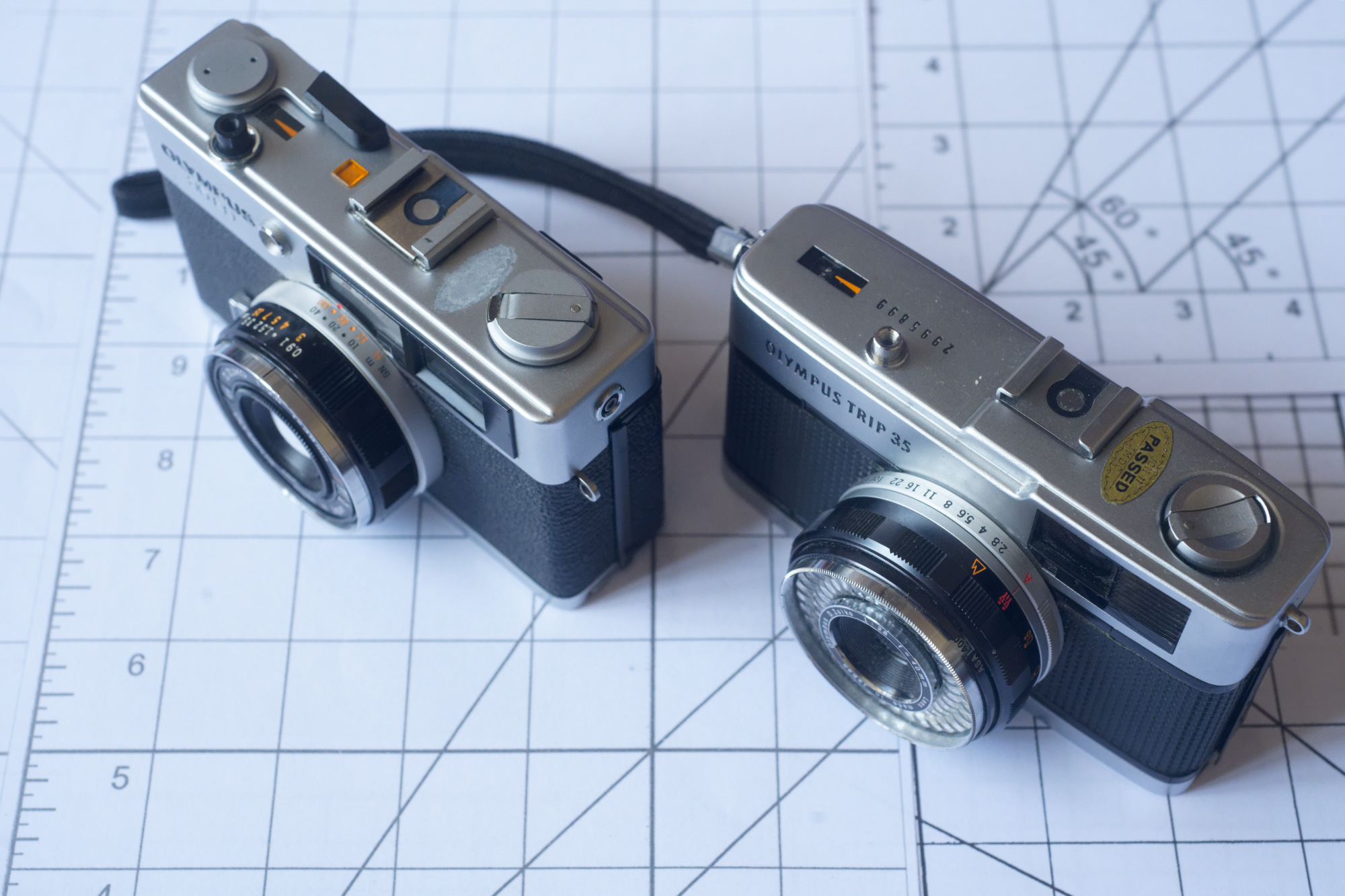
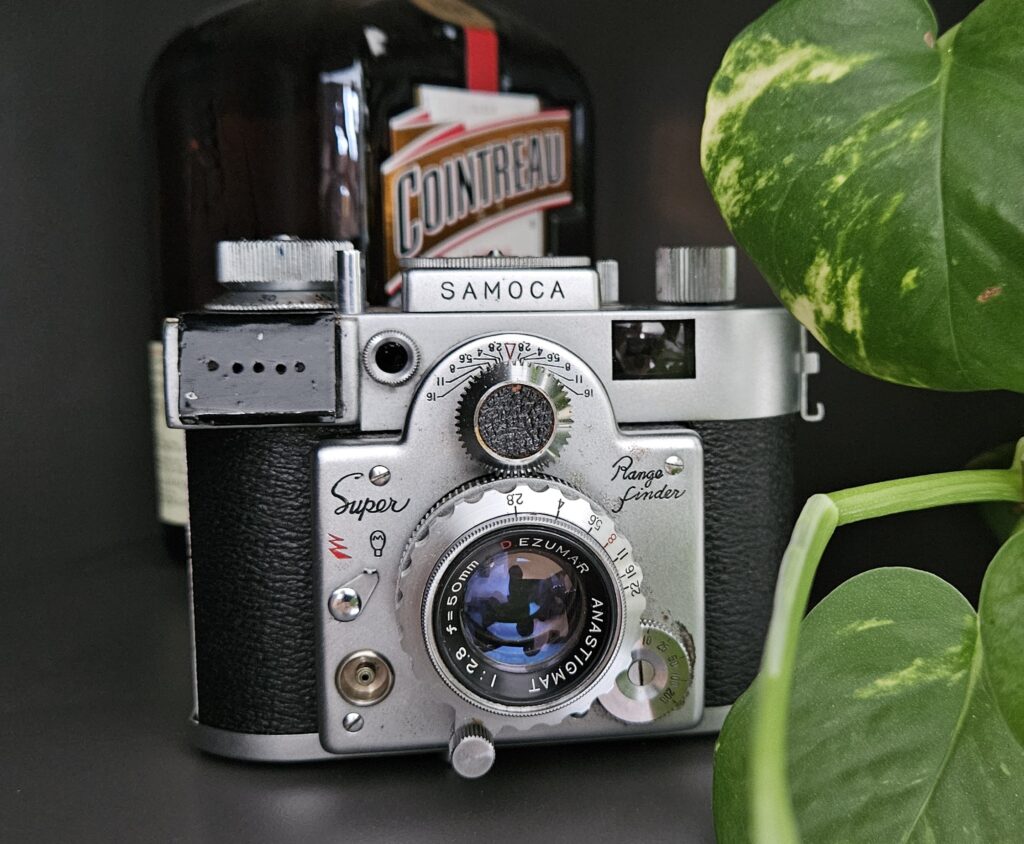
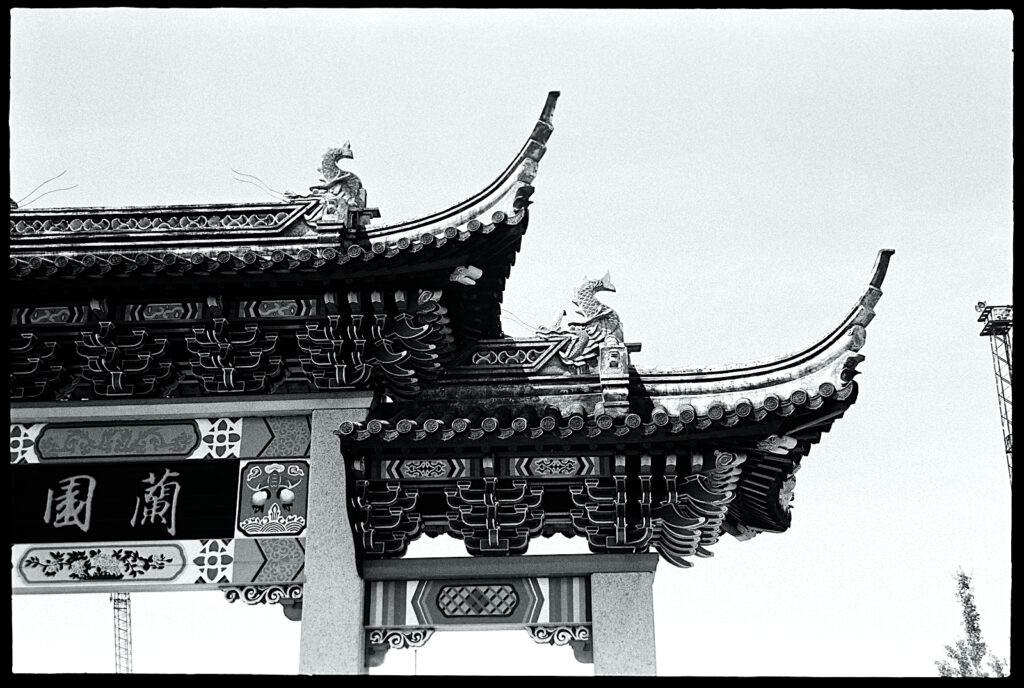
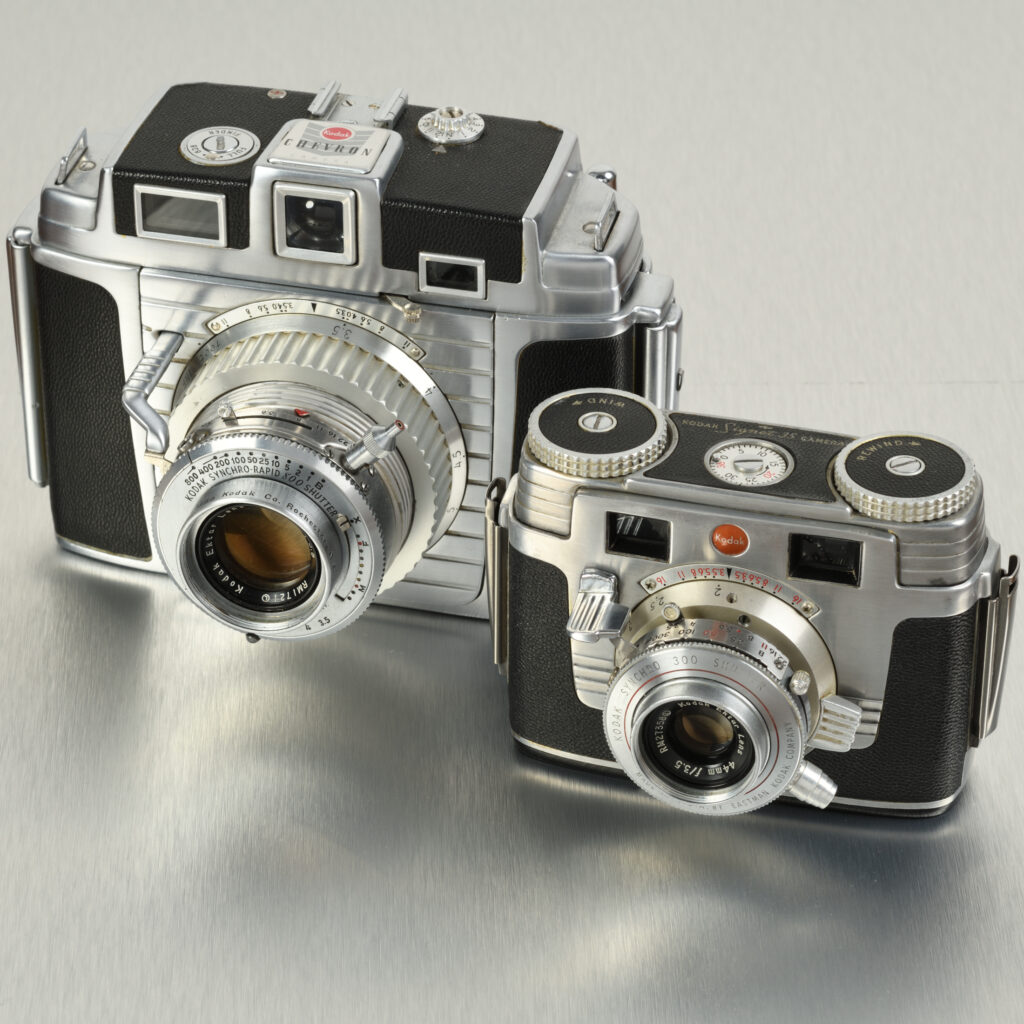
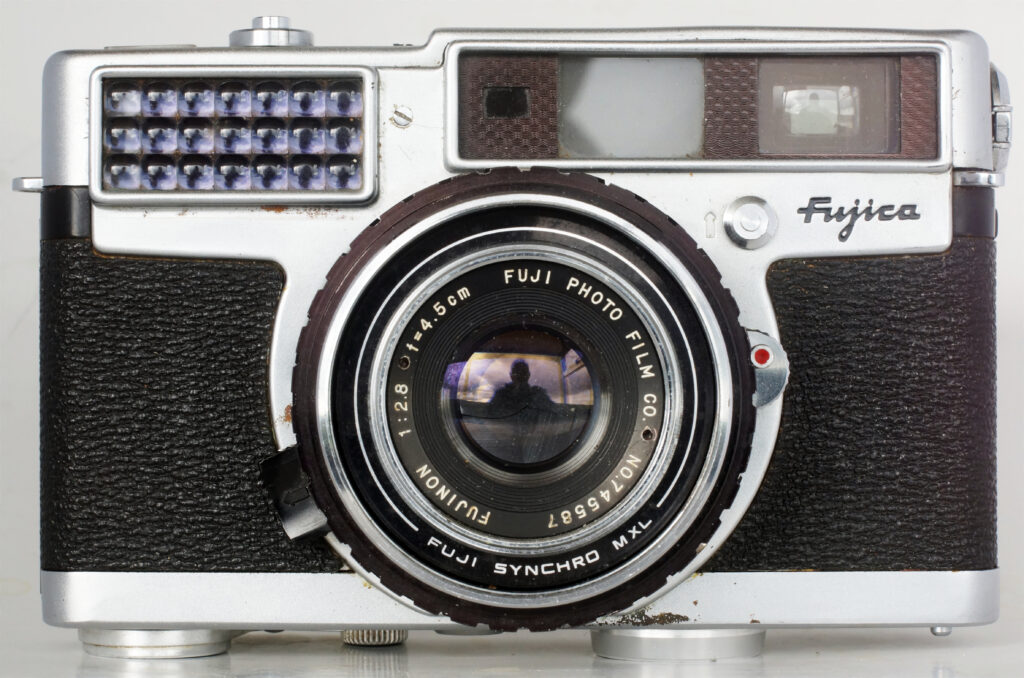

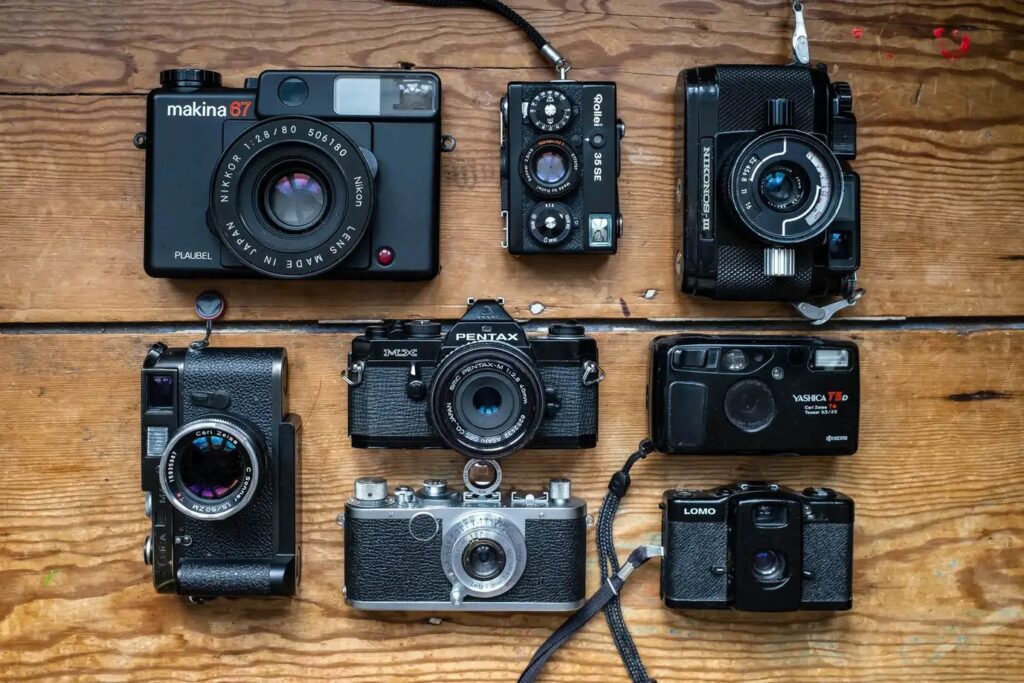
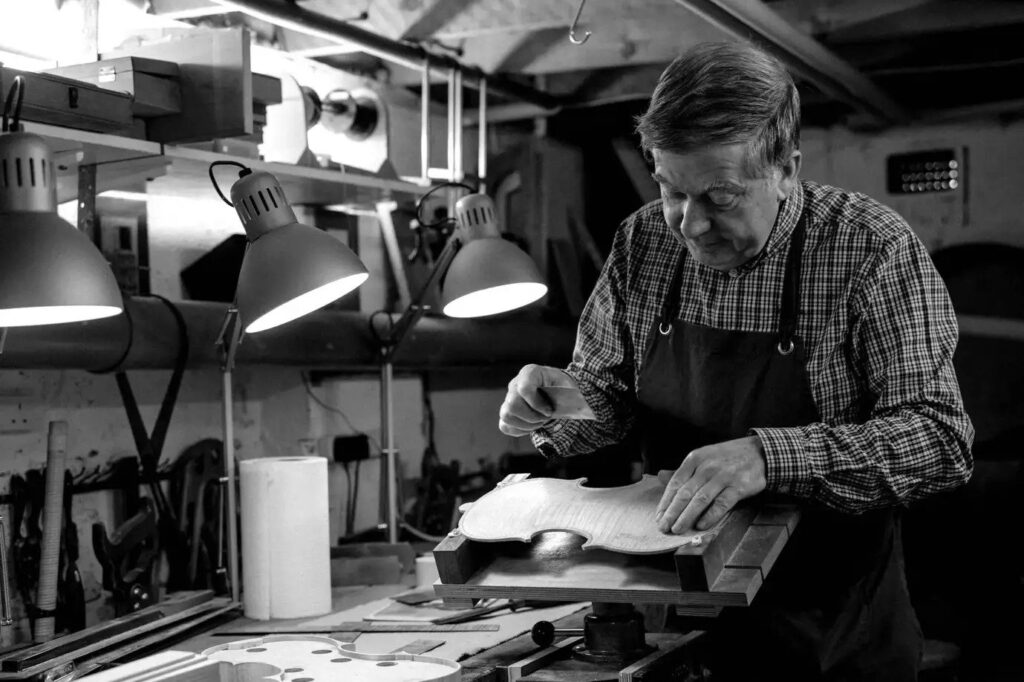
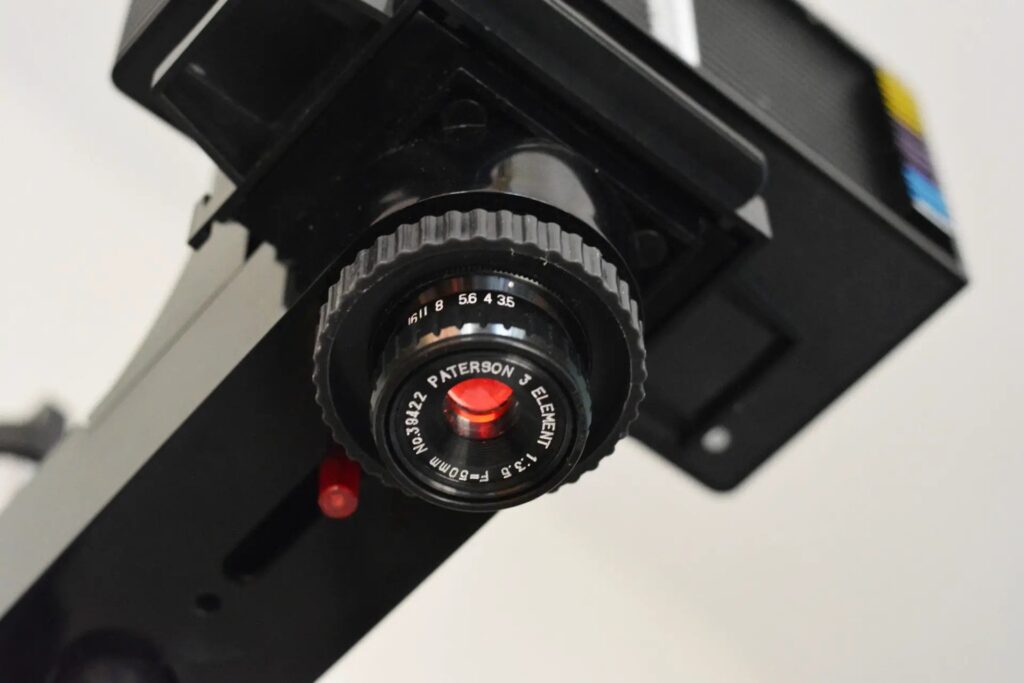
Comments
No comments found